
Gesuale B.RFID - read my chips!2004
.pdf
April 2004
RFID Value Proposition RFID is the most pressing hands-free automatic identification solution that has the potential (Cost And Benefits) to deliver read rates consistently near the 100% level to varied vertical markets, in our
opinion. The technology offers the ability to scan multiple items simultaneously using a non-line-of-sight mechanism. This capability will create tremendous value by reducing operating costs and increasing revenue opportunities in addition to improving quality and reducing shrinkage. In addition, the technology provides economical solutions to critical problems such as container security and authentication of documents and articles.
Benefits Over Existing Solutions: The current solution suffers from many drawbacks, most notable is the inability to store large amounts of data, dynamically update data in fields, and scan multiple items simultaneously without human intervention. Barcodes are economical but cannot store large amounts of data. Optical character recognition can store a slightly larger amount of data as compared to barcodes but the technology is expensive and complicated. Both barcode and OCR require line of sight to function and are highly susceptible to environmental conditions. Neither of these solutions offer any significant level of security against tempering and forgery. Another limitation of the current solution is the lack of ability to dynamically and automatically update the stored data.
Exhibit 37
RFID VERSUS OTHER TECHNOLOGIES
Attribute |
RFID |
Barcode |
OCR |
Smart Card |
Cost |
High |
Low |
High |
High |
Data Storage |
High |
Low |
Medium |
High |
Form Factor |
Small |
Small |
Medium |
Large |
Multiple Simultaneous Reads |
Yes |
No |
No |
No |
Dynamic Data Update |
Yes |
No |
No |
Yes |
Security and Authentication |
High |
Low |
Low |
High |
Access Mechanism |
NLOS |
LOS(optical) |
LOS(optical) |
NLOS |
|
|
|
|
|
Source: Piper Jaffray & Co.
RFID combines the advantages of all the existing automatic identification technologies while eliminating the disadvantages. RFID enables simultaneous reading of multiple tags through non-line-of-sight mechanisms. RFID tags can store a large amount of data, which can be updated automatically and dynamically. RFID offers a higher level of security features for data protection.
40 | RFID—Read My Chips! Piper Jaffray Equity Research

RFID: The Next Big
Wave Of Technology
Spending
Market Size
April 2004
We believe that RFID will be one of the fastest-growing major technology markets for much of the rest of the decade. The market needs the technology. Big spenders are committed to buying RFID solutions. New companies and incumbent companies are rapidly innovating to meet the demand. Costs are falling. Supply is ramping. Quality is improving. And word is spreading.
We forecast that the U.S. RFID hardware market, composed of tags, readers, and printers, will grow from $742 million in 2004 to nearly $5 billion in 2009 at a CAGR of 41%. We expect tags will form the major chunk of the market with sales rising from $544 million in 2004 to nearly $3.8 billion in 2009 at a CAGR of 42%. We estimate printers will grow from a mere $86 million in 2004 to $580 million in 2009 at a CAGR of 42%. We project readers will grow from $113 million in 2004 to $624 million in 2009 at a CAGR of 36%.
Exhibit 38
PIPER JAFFRAY U . S . RFID HARDWARE MARKET FORECAST
|
2004 |
2005 |
2006 |
2007 |
2008 |
2009 |
Tags |
544 |
1,055 |
1,904 |
2,499 |
3,102 |
3,779 |
Readers |
113 |
164 |
265 |
444 |
555 |
624 |
Printers |
86 |
140 |
209 |
340 |
444 |
580 |
Total |
742 |
1,359 |
2,379 |
3,283 |
4,102 |
4,983 |
|
U .S. RFID Hardware Market in $ Million |
|
|
|||
6,000
5,000
4,000
3,000 |
|
|
2,000 |
|
|
1,000 |
|
|
0 |
|
|
2004 |
2005 |
2006 |
2007 |
2008 |

 Printers
Printers

 Readers
Readers

 Tags
Tags
2009
Source: Piper Jaffray & Co.
Piper Jaffray Equity Research RFID—Read My Chips! | 41
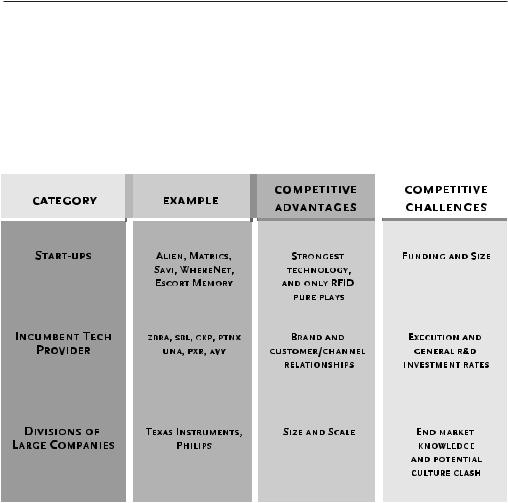
April 2004
Segmenting The RFID |
We divide the RFID vendor field into three broad categories including start-up companies, |
|||||||
Vendor Field |
incumbents supply chain technology vendors, and divisions of larger companies that want |
|||||||
|
|
to leverage existing technology portfolios or channel relationships to break into the new |
||||||
|
|
market. Each of the companies in our broad categories brings advantages and |
||||||
|
|
disadvantages to the table. When the dust settles, we expect to see a handful of successes |
||||||
|
|
emerge from each category and a lengthy list of failures from each category. |
||||||
|
|
Exhibit 39 |
||||||
|
|
|
|
|
|
|
|
|
|
|
RFID VENDOR LANDSCAPE |
||||||
|
|
|
|
|
|
|
|
|
|
|
|
|
|
|
|
|
|
|
|
|
|
|
|
|
|
|
|
|
|
|
|
|
|
|
|
Source: Piper Jaffray & Co.
Start-Up Companies: These are the only current RFID pure plays in existence. Examples in this category include Alien Technology, Matrics, SaviTechnology, Oat Systems, WhereNet, Escort Memory Systems, and others. And while today most are privately funded, we believe a small group of these names will make the transition to the public markets.These companies' chief competitive advantage is their technical acumen. Many are perceived as the pioneers of the modern RFID business.
We believe this group's pure focus on RFID and generally much higher ratio of engineers to marketers often give this group the edge on the innovation side. Not coincidentally, we have seen a group of start-ups win big deals with blue chip clients including Matrics with International Paper, Alien with Gillette, Savi with the DoD, and more. We believe the innovation and focus compel these large players to ink multiyear deals with a relatively young group of companies. The primary disadvantages these names face are funding, and to a lesser extent, perception. Being privately funded, these companies have to constantly focus on getting additional funding to ramp up production and staff capabilities; admittedly, the appetite for a good RFID business plan appears to be very robust. The other disadvantage is perception. We use this term loosely but we generally believe that big
42 | RFID—Read My Chips! Piper Jaffray Equity Research

April 2004
companies want to have infrastructure solutions provided by other big players. The good news is that both of these disadvantages just seem to be minor speed bumps in the progression of the RFID upstarts' growth cycle.
Incumbent Solutions Providers: These are not pure-plays and generally have RFID-related sales below the 10% of total sales mark. This category includes players who are entrenched in the incumbent auto-identification technology markets such as barcode and OCR. The most notable examples include Zebra Technologies, Symbol Technologies, Checkpoint Systems, Paxar, and UNOVA/Intermec. These companies tend to generate the majority of sales via printers, readers, and labels that rely on barcode or other legacy autoID technologies.
Exhibit 40
RFID HARDWARE COMPANY COMPS
|
Ticker |
Price |
Market Cap. |
CY03 Sales |
CY04 Sales(E) |
EV/CY05 |
P/E 05(E) |
|
|
(4/22/04) |
($ mil.) |
($ mil.) |
($ mil.) |
sales(E) |
|
||
|
|
|
|
|||||
|
|
|
|
|
|
|
|
|
|
ZBRA |
75.88 |
3,605 |
536 |
611 |
4.6 |
29.3 |
|
|
UNA |
19.13 |
1,157 |
1,145 |
1,192 |
0.8 |
21.7 |
|
|
CKP |
16.73 |
628 |
723 |
746 |
0.8 |
14.7 |
|
|
SBL |
13.46 |
3,112 |
1,507 |
1,726 |
1.5 |
19.5 |
|
|
PXR |
15.67 |
613 |
712 |
763 |
0.6 |
12.8 |
|
|
PTNX |
14.14 |
82 |
128 |
134 |
0.4 |
11.4 |
|
|
|
|
|
|
|
|
|
|
Source: Company reports, Piper Jaffray and First Call estimates
This group's chief competitive advantage stems from three general sources: its brand, customer relationships/industry knowledge, and established sales channels. Chief concerns making the transition for this group pertain to execution and an often slower rate of innovation than the start-ups. Execution will be key because these companies will be faced with defending their core business while investing in the disruptive technology, RFID, that is cannabalizing their existing business. There will be a level of self-cannibalization, which we believe is necessary for this group to grow its businesses. Slower rates of innovation are natural with larger companies, but some companies are investing heavily to keep innovation high. Most notably, is Zebra. Zebra invests roughly 6% of total sales in R&D and has $400 million in cash that we believe the company will deploy to acquire RFIDrelated technology.
Divisions Of Large Companies: Again, this group will generally have an even smaller component of sales (well below 5% of total sales) generated by RFID products. These are companies that have competencies in RFID-related technologies and have spawned divisions to attack the market. The most notable examples include Texas Instruments and Philips Semiconductors. Both of these companies have significant experience in RF and semiconductor technologies and are leveraging these competencies to break into a lucrative market. In addition to this group's technological expertise, these companies are flush with capital and can outspend most of their competitors. Disadvantages include less familiarization with the end markets served and potentially some difficulty maintaining intellectual capital within the non-core divisions.
Piper Jaffray Equity Research RFID—Read My Chips! | 43
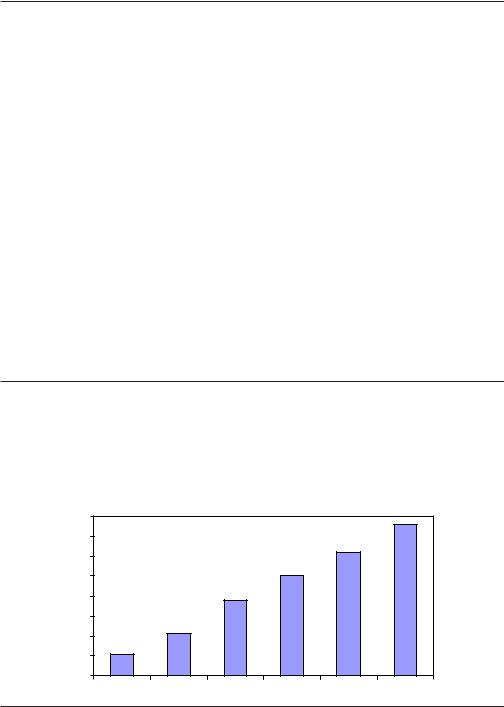
April 2004
Tags—The Silicon
Razor Blades Of RFID
Tags are the consumables in the RFID market and form the largest chunk of the market. They are often disposable, creating a recurring revenue stream. Ironically, even tags that are not disposable are often misplaced, creating a predictable base of recurring sales as well. Tags are a critical product because we believe tags orders are the leading indicator for additional spending on RFID in other software, hardware, and service areas. Tags also form the foundation for the overall RFID solution. Alien Technology, Matrics and Texas Instruments are the leading passive tag vendors. Savi is the leading active tag manufacturer. The long pole in the tent of tag production has been attaching antennas to chips. Innovations to increase speed and accuracy while reducing costs are happening rapidly. Matrics' PICA method and Alien's Fluidic Self Assembly technology are two such potential manufacturing alternatives that hold promise versus more common flip-chip assembly processes.
Growth Drivers: The primary growth driver for the tag is the price. During most of 2003, tags were priced north of $0.50. At the time of this publication, tags are generally pricing between $0.20 and $0.50 depending on volume. The industry march to nickel tags seems to be the magic number that turns the lights on to full unit-level RFID adoption. We believe nickel tags will be reality toward the end of our forecast period.
Market Forecast: We estimate that the tags market will grow from $544 million in 2004 to $3.8 billion in 2009 at a CAGR of 42%. Exhibit 41 depicts the market growth.
Exhibit 41
PIPER JAFFRAY U . S . RFID TAGS FORECAST
|
2004 |
2005 |
2006 |
2007 |
2008 |
2009 |
Market Size($mil) |
544 |
1,055 |
1,904 |
2,499 |
3,102 |
3,779 |
YoY Growth |
|
94% |
80% |
31% |
24% |
22% |
U.S. RFID Tags Market in $ Million
4,000 |
|
|
|
|
|
3,500 |
|
|
|
|
|
3,000 |
|
|
|
|
|
2,500 |
|
|
|
|
|
2,000 |
|
|
|
|
|
1,500 |
|
|
|
|
|
1,000 |
|
|
|
|
|
500 |
|
|
|
|
|
0 |
|
|
|
|
|
2004 |
2005 |
2006 |
2007 |
2008 |
2009 |
Source: Piper Jaffray & Co.
44 | RFID—Read My Chips! Piper Jaffray Equity Research

April 2004
Readers |
Readers form a significant chunk of the RFID market. Currently, readers are priced around |
|
$1,000-$3,000. We expect the prices of readers will decline dramatically during our |
|
forecast period as well. Reader costs can be slightly misleading given the propensity to |
|
have small handheld units blended with larger fixed and mobile readers. We are projecting |
|
that the average price of readers will fall by more than 50% by 2008. Symbol, Matrics, |
|
Alien Technology, SAMSys, and Intermec are the leading providers. |
Growth Drivers: RFID adoption is the major driver and tag orders are the primary leading indicator. As the adoption increases, more readers will be needed to cover the increasing number of transit or nodal points. Another driver is needed for additional visibility in the supply chain as users begin to fully appreciate the benefits of the RFID. After the initial deployment, we expect users to install additional readers in warehouses and distribution centers to track pallets as they move through the supply chain.
Market Forecast: We estimate that the reader market will grow from $113 million in 2004 to $624 million in 2009 at a CAGR of 36%. Exhibit 42 depicts the market growth.
Exhibit 42
PIPER JAFFRAY U . S . RFID READER FORECAST
|
2004 |
2005 |
2006 |
2007 |
2008 |
2009 |
Market Size($mil) |
113 |
164 |
265 |
444 |
555 |
624 |
Y/Y Growth |
|
46% |
62% |
67% |
25% |
12% |
U.S. RFID Reader Market in $ Million
700 |
|
|
|
|
|
600 |
|
|
|
|
|
500 |
|
|
|
|
|
400 |
|
|
|
|
|
300 |
|
|
|
|
|
200 |
|
|
|
|
|
100 |
|
|
|
|
|
0 |
|
|
|
|
|
2004 |
2005 |
2006 |
2007 |
2008 |
2009 |
Source: Piper Jaffray & Co.
Piper Jaffray Equity Research RFID—Read My Chips! | 45
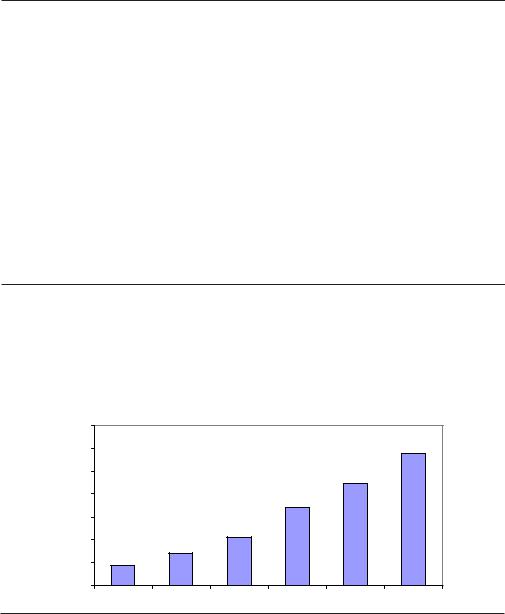
April 2004
Printers |
Printers form the last major leg of the RFID hardware market in our forecast. Traditional |
|
barcode printers, in our view, will be modified and become the major technology used to |
|
encode RFID tags in the field. Printers with this functionality are currently priced at |
|
$3,500. The recurring theme is that we expect this market will see fairly rapid price |
|
declines as well. We expect the prices will decline more than 50% to sub-$2,000 by 2008. |
|
Zebra Technologies, Intermec, and Printronix are the leading printer vendors. |
Growth Drivers: Again, the primary growth driver for the printer market is the increased adoption of RFID foreshadowed by tag orders. As RFID adoption grows, we are likely to see more high-end barcode printers with integrated RFID encoders. During the RFID adoption cycle, we expect to see integrated encoders with midrange and perhaps low-end printers as well.
Market Forecast: We estimate that the printer market will grow from $86 million in 2004 to $580 million in 2009 at a CAGR of 42%. Exhibit 43 depicts the market growth.
Exhibit 43
PIPER JAFFRAY U . S . RFID PRINTER FORECAST
|
2004 |
2005 |
2006 |
2007 |
2008 |
2009 |
Market Size($mil) |
86 |
140 |
209 |
340 |
444 |
580 |
YoY Growth |
|
63% |
49% |
62% |
31% |
30% |
U.S. RFID Printer Market in $ Million
700 |
|
|
|
|
|
600 |
|
|
|
|
|
500 |
|
|
|
|
|
400 |
|
|
|
|
|
300 |
|
|
|
|
|
200 |
|
|
|
|
|
100 |
|
|
|
|
|
0 |
|
|
|
|
|
2004 |
2005 |
2006 |
2007 |
2008 |
2009 |
Source: Piper Jaffray & Co.
46 | RFID—Read My Chips! Piper Jaffray Equity Research
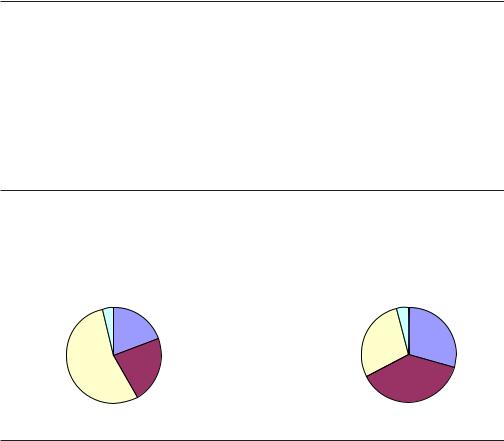
April 2004
Vertical Markets Analysis Within our consolidated RFID hardware market, we have forecast the size and growth rates by major industry category. The major market segments in our forecast include the U.S. Government, Retail/CPG, Transportation & Logistics companies, Manufacturing, and the Life Sciences industry. While other niche applications will surely emerge, we believe these industries will comprise more than 96% of the overall end-market opportunity.
Manufacturing is the largest end-market of RFID in 2004. However, we believe the U.S. Government and Retail/CPG markets will become the largest vertical market opportunities and each comprise more than 30% of the overall market by 2009.
Exhibit 44
RFID VERTICAL SNAPSHOT — 2004 VERSUS 2009 |
|
|||
RFID Hardware Market - 2004 |
RFID Hardware Market - 2009 |
|||
|
Healthcare |
Retail/CPG |
|
Healthcare |
|
4% |
|
4% |
|
|
19% |
|
||
|
|
|
Retail/CPG |
|
|
|
|
Manufacturing |
30% |
|
|
|
29% |
|
Manufacturing |
|
Government |
|
|
54% |
|
23% |
|
|
Government
37%
Source: Piper Jaffray & Co.
Piper Jaffray Equity Research RFID—Read My Chips! | 47

April 2004
Government Markets
Market Forecast: We estimate government spending on RFID infrastructure will grow from $170 million in 2004 to nearly $1.9 billion in 2009 with a CAGR of 55%. Exhibit 46 depicts the breakdown in terms of individual line items.
The U.S. government will turn out be one of the early adopters of RFID and one of the largest users of the technology. Like the corporate sector, government is motivated by the tremendous cost savings and improved productivity that RFID promises.
Exhibit 45
THE GOVERNMENT GETS TAGGED
Asset Tracking |
Specialized Applications |
||
|
|||
|
|
|
|
|
|
|
|
|
|
|
|
|
|
|
|
|
|
|
|
Border Security |
Logistics Enabling |
|
Source: Piper Jaffray & Co.
Applications: While there are a myriad of applications of RFID technology in the government space, we have focused on the two most critical applications—Defense Logistics and Security Applications.
Defense Logistics: The U.S. DoD has one of the largest logistics operations in the world. With forces deployed all over the world at isolated locations, the logistic operations are relatively more expensive as compared to retail chains, which typically have a cluster of stores to optimize operations. In addition, logistics play a critical role in the outcome of a war and efficient logistics operations can result in faster deployment.
Security: Security applications vary from container security initiatives to checked baggage tagging. Container security has been getting increasing attention as containers can be used by terrorists to smuggle in a biological or radiological device in the United States.
According to various estimates, 14 million containers arrive at U.S. ports annually. Given the huge number of containers and relative ease with which weapons can be smuggled in using containers, the U.S. government is looking for ways to make the containers tamperproof. One of the leading solutions is to use an RFID seal that indicates its status as soon as an RFID reader interrogates it. If the seal has been tampered with, it will either not transmit its status to the reader or will indicate that it has been tampered with.
Checked baggage tagging to streamline the flow of bags through explosive detection systems (EDS) and to keep track of bags in an airport is another emerging application. If the EDS machine identifies a bag for further examination for explosives, it writes the information on the RFID tag attached to the bag. As the bag passes through the conveyor system, the readers read the tags attached to all the bags and routes the bags that need further inspection for physical examination or for scanning by more advanced machines.
Other potential applications include travel document authentication (passport and visa) and boarding pass authentication.
48 | RFID—Read My Chips! Piper Jaffray Equity Research
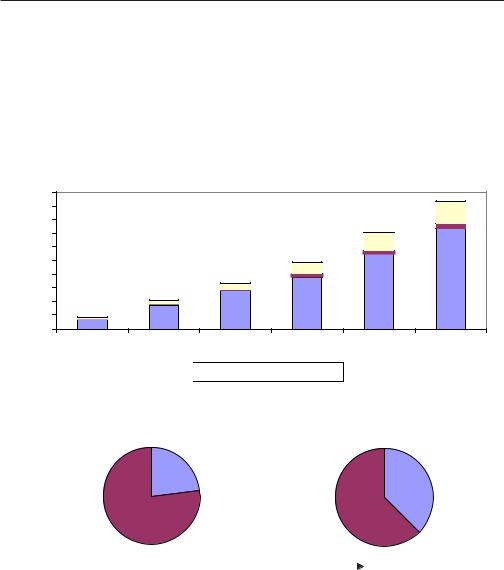
April 2004
Exhibit 46
PIPER JAFFRAY U . S . GOVERNMENT RFID HARDWARE MARKET B R E A K D O W N
Market size in $ million |
2004 |
2005 |
2006 |
2007 |
2008 |
2009 |
Tags |
132 |
342 |
559 |
753 |
1,093 |
1,464 |
Printers |
7 |
22 |
22 |
51 |
61 |
84 |
Readers |
31 |
60 |
82 |
170 |
254 |
323 |
Total Govt. H/W Market |
170 |
424 |
664 |
975 |
1,408 |
1,872 |
Government RFID Hardware Market in $ Million
2,000 |
|
|
|
|
|
1,800 |
|
|
|
|
|
1,600 |
|
|
|
|
|
1,400 |
|
|
|
|
|
1,200 |
|
|
|
|
|
1,000 |
|
|
|
|
|
800 |
|
|
|
|
|
600 |
|
|
|
|
|
400 |
|
|
|
|
|
200 |
|
|
|
|
|
0 |
|
|
|
|
|
2004 |
2005 |
2006 |
2007 |
2008 |
2009 |


 Tags
Tags  Printers
Printers  Readers
Readers
|
2 3 % |
3 8 % |
||
|
|
G o v e r n m e n t |
|
G o v e r n m e n t |
|
|
V e r t i c a l |
|
V e r t i c a l |
7 7 % |
|
|
6 2 % |
|
Rest of Hardware |
|
Rest |
of Hardware |
|
M a r k e t |
|
|
M a r k e t |
|
|
2 0 0 4 |
|
|
2 0 0 9 |
|
|
|
||
|
|
|
|
|
Source: Piper Jaffray & Co. |
|
|
|
|
Piper Jaffray Equity Research RFID—Read My Chips! | 49
